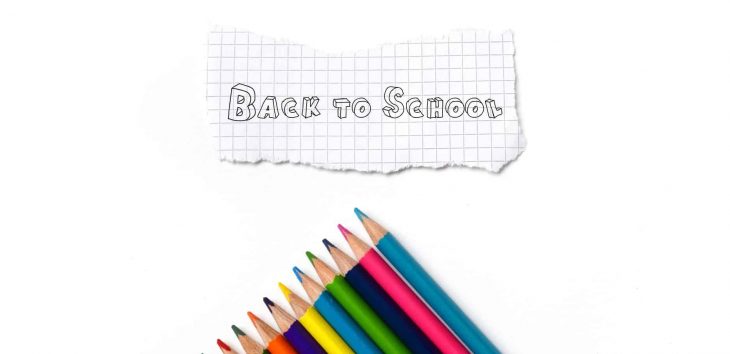
It’s no secret that the holiday season drives retail year-over-year, and that’s true online or off. Amazon might boost its summer numbers with Prime Day, but even the Goliath of eCommerce is most hopping come October or November. Just check out this Statista graph that shows Amazon net revenue by quarter: those stair-step peaks all correlate to the 4th quarter of each year.
Online retailers can get a jump on their own revenue spike in the 3rd quarter by integrating back-to-school content marketing strategies. Even if you don’t offer traditional school-related goods (think notebooks, pens, clothing, locker decor and dorm furniture), finding creative ways to link your content marketing to back-to-school mindsets can be profitable. If you do sell school-related goods, this type of inbound marketing is pretty much compulsory, and here are some shrewd steps you can take this season and use again next September.
[ctt template=”4″ link=”r7UP0″ via=”yes” nofollow=”yes”]Get a jump in the third quarter by integrating back-to-school content marketing strategies.[/ctt]
Target the Right Back-to-School Search Phrases
Say what you will about the relevance of keywords today: people have to find your pages somehow, and search engines still play a big role there. Seasonal keyword word research requires some extra steps, though. You need content that targets what consumers will search for in the days before and as school starts, and those phrases may differ from high-performing niche keywords from December or May.
Real-time keyword research may not give you all the data required to target correctly, so consider reviewing 12-month trends. You can see what keywords performed well last school-shopping season and couple that data with current keyword performance and market research to make better informed SEO decisions for blog posts, titles, landing pages and product descriptions. One tool that lets you see keyword performance over time is SEMRush.
Related: 3 Tips to Help Your Emerging eCommerce Business Surge
Create Show-and-Tell Content and Product Descriptions
Getting kids ready for school can be stressful. Parents and guardians have to meet multiple demands — teachers and schools want very specific, and not always easy-to-find, supplies, but kids have their own ideas about accessories and style. Add in the need to get things together in a timely manner and stay within a budget, and it’s understandable why parents dread back-to-school shopping.
Online retailers can make the entire process easier by creating informative, concise content. From buying guides to how-to videos, incorporate content that goes beyond telling parents (and kids) why they need your products. Show them how to use those products, help them decipher the confusing language of school supply lists and provide tips for getting the most out of each supply. Use tags and categories to organize products so shoppers can easily find different types of goods or filter offerings by age, class type or interest. Create a slide show that explains the difference between types of paper, or put together a video showing how your product can help kids with academic, social and extra-curricular activities this school year.
Even your product descriptions can be informative as well as salesy. Not sure how to strike a balance between helpful expert and retail shop? Professional product description writers can convert unengaging feature lists to PDs that entertain, inform and convert.
[ctt template=”4″ link=”Qdk39″ via=”yes” nofollow=”yes”]Get the most from back-to-school eCommerce content marketing by enriching product descriptions and offering targeted promos.[/ctt]
Host Contests and Promotions for Kids and Parents
School shopping can get expensive, so deals and promos definitely catch parent eyes. If you offer free shipping, participate in tax holidays or have a BOGO option, incorporate it into content marketing on your blog, landing pages and social profiles. Remember that kids — especially teenagers — often have a say in what items are bought for them for school.
Many eCommerce companies don’t leverage promos well in marketing campaigns, so take some time to create an editorial calendar specifically for contests and deals. Ask yourself or your team:
- How can messaging be incorporated onsite, via social and through email? Remember: content has to be customized to both the target audience and the medium.
- Can you issue a press release? PR services don’t typically accept purely promotional pieces, but if your organization is offering a specific, temporary promo, you may be able to spin it into a newsworthy piece tied to the season.
- Who is the audience for the promo? Remember to meet them where they are: teens are more likely to be on Snapchat and Instagram while their parents are on Facebook.
Content marketing that leverages seasonal pain points — such as school supply shopping — and promises an easy, helpful solution wins. Incorporate back-to-school campaigns to get a head start on end-of-year revenue boosts.
